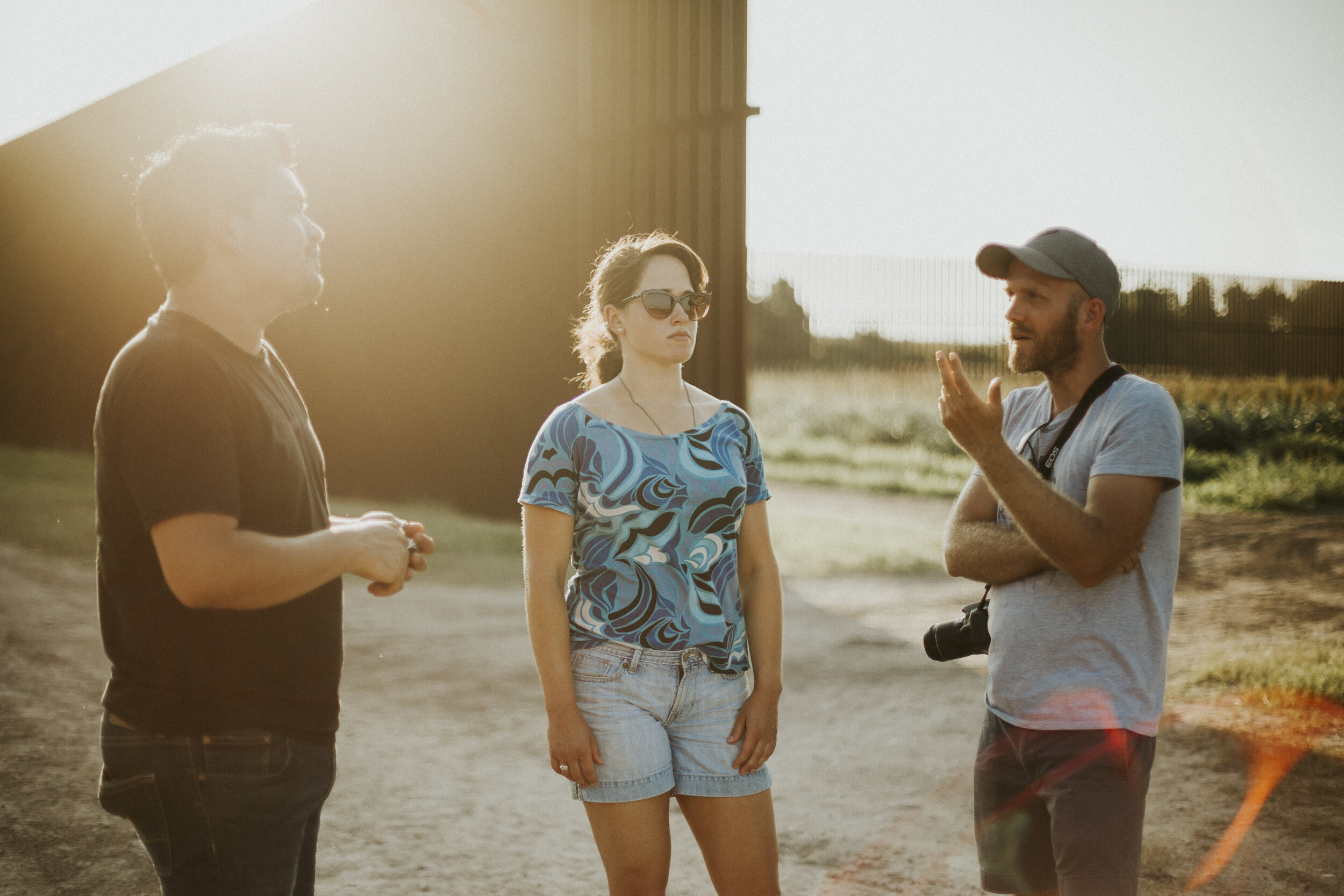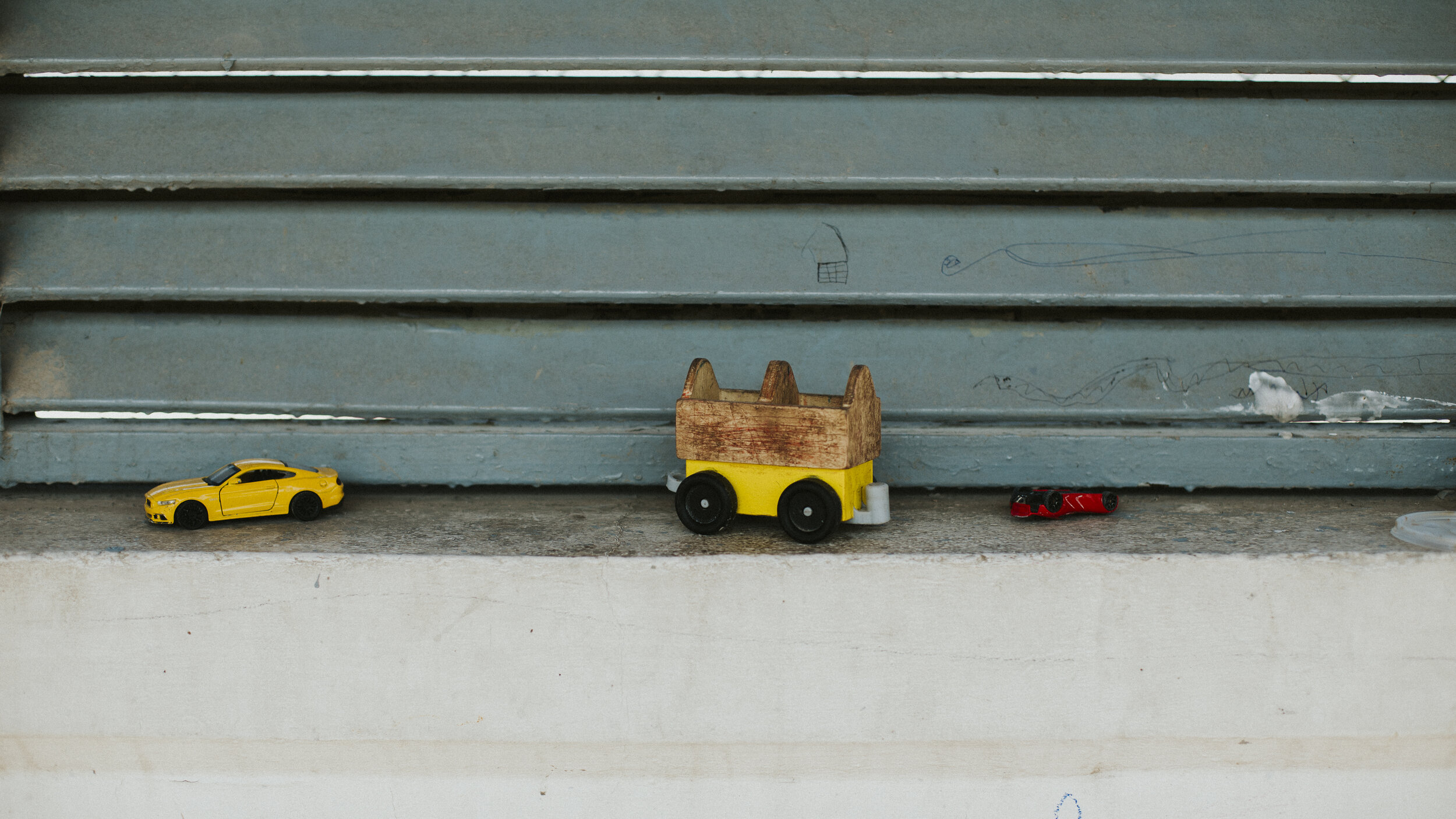Twenty-Eight Days on the Progreso International Bridge
The following story from the US-Mexico border is an excerpt from Liberatus Journal Volume One. To get a copy of the journal and read the piece in its entirety, back Volume One now on Kickstarter. To join us on the return trip to the US-Mexico border as we write the sequel and to make a substantial commitment to greater unity in politics, select the Volume Two Creators Experience reward for $5,000. Additionally, this week through February 5, all new pledges will be matched, up to $5,000.
Herman told us he had owned a bakery in Honduras.
A few beads of sweat ran down my spine. I shielded my eyes from the sun and a breeze blew a half-finished coloring book page across my feet. Under a golden-colored puppy, the caption read, “let’s play.”
American tourists carried tacky souvenirs, and a few loudly discussed what prescription drugs they’d picked up in Mexico. One block into Nuevo Progreso, and I’d been offered a few dental treatments, Cuban cigars, and Adderall. The Progreso International Bridge facilitates medical tourism. This is the daily rhythm of the bridge. Countless people flow by averting their eyes, but the families here can only wait and hope for a chance to request asylum at the US border.
I’d stepped into the walkway on the bridge crossing the US-Mexico border that Herman and his family had shared for 28 days. Yet, a steady stream of people passing between us to re-enter the United States reminded me that the Rio Grande was just beneath our feet.
After 28 days of waiting here, I’m sure Herman knows every idiosyncrasy of the Progreso International Bridge. I’ll forever see his double-knotted clean red Adidas sneakers. He just wants to go to Kansas. He journeyed to our southern border with his wife and daughter, who have already followed the shade across the street. The Mexican side of the bridge is sectioned into neat campsites. Mexican blankets are neatly folded, air mattresses lean against the railing out of the walkway for the day, and bulging backpacks are tucked behind them. On the American side, the bridge is vacant other than two bored Customs and Border Protection (CBP) officers standing beneath a temporary awning directly on the international boundary line.
A gang had burned Herman's bakery down when he could not pay them. After losing so much, I wonder if it’d make any difference to him to know he’ll lose his shoe laces, if and when his turn comes. He holds police reports and photos as part of his evidence for seeking asylum. For the last six days, CBP has not processed anyone waiting on the bridge. “Radio silence,” he says.
I had met the people who will be waiting to help him if he ever gets the chance to make his plea for asylum—the overworked volunteers who had taken on the task of welcoming asylum seekers. Sweating profusely, we had squeezed through the crowds waiting patiently as others passed by cleaning or sorting supplies. At first, I had assumed everyone working at this Catholic Charities center to be a volunteer, but then I began looking at shoe laces. I’d spent that morning staring at shoes. Citing safety concerns, CBP takes shoe laces from those seeking asylum. Unfortunately, it also sets them apart; marks them as unworthy. Many of them have chosen to help with cleaning the facilities, so their lack of shoe laces is all that distinguishes them from the volunteers. Small tears in the fabric indicated where tassels once sat on boat shoes and tattered moccasins. Purple Nikes, black Converse, dusty oxfords, all slipping from exhausted feet.
***
When I tie my shoes, I remember that dehumanization typically involves stripping individuals of their possessions. A child had a stuffed Care Bear on the bridge, another set a small yellow Ford Mustang atop the railing, and they wore American brands. In the few sentimental items they chose to carry, they mirrored my own Midwestern childhood. That Care Bear will be discarded à la Velveteen Rabbit, but that won’t just stop disease. It will remove indicators of our shared identity. Without shoelaces, his red Adidas will set Herman apart on his journey to Kansas.
***
I’ll never know the rest of Herman’s story. Yet, every day, I wonder how much longer he waited on that bridge. I worry for him as one worries for a friend. I’ll never understand his suffering. We cannot compare suffering because its true depth and weight is individual, yet we can compare the systems that create suffering. When a system displays the markings of dehumanization (intentionally or otherwise) we should not wait until its effects are undeniably comparable. Stories are preserved so that we do not forget. Not so that we can complacently think, “we aren’t that bad.” Some horrors are so great, that merely letting them echo in our current actions should be unbearably mortifying.
Photography by Anastasia Waltschew.
WEEKLY ACTION ITEM:
For inspiration for the journey to overcome us vs them narratives and become Americans the next generation will love, back Liberatus Volume One now on Kickstarter. Then, join us on Instagram live tonight at 8:30 PM Eastern to meet Yonathan Moya, founder of Border Perspective, and to get a first look at page layouts of Emma’s article.
Liberatus is a community journal on wholeness in politics, giving us inspiration to overcome us vs them narratives and become Americans the next generation will love.
Journal Entry #121
ISSUE 018: INAUGURATE PEACE, PART 2






